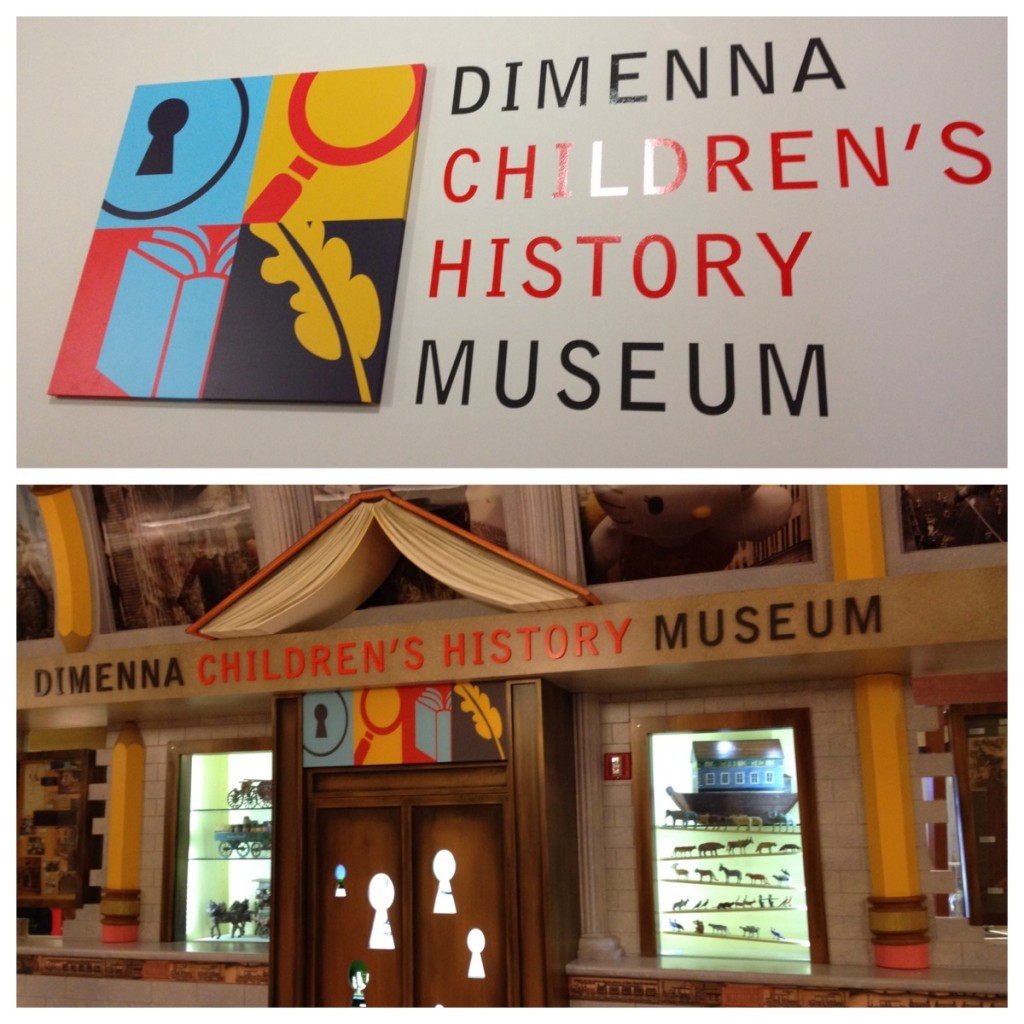 Last week I was able to visit the Dimenna Children’s History Museum, part of the newly renovated New York Historical Society Museum and Library. I was impressed with the size and scale of this area in the museum, though I’m still not quite sure what makes the Dimenna a museum vs. a gallery or youth education wing. I’m also not quite sure what makes this area of the NYHS a “children’s” museum as I was thoroughly intrigued, entertained, curious and surprised. There’s a lot of great stuff in the basement, so make sure that you take the plunge down the stairs.
Last week I was able to visit the Dimenna Children’s History Museum, part of the newly renovated New York Historical Society Museum and Library. I was impressed with the size and scale of this area in the museum, though I’m still not quite sure what makes the Dimenna a museum vs. a gallery or youth education wing. I’m also not quite sure what makes this area of the NYHS a “children’s” museum as I was thoroughly intrigued, entertained, curious and surprised. There’s a lot of great stuff in the basement, so make sure that you take the plunge down the stairs.
One of the most impressive features of the Dimenna is the use of technology throughout the space. There were computer games around every corner, and they were intelligent, aesthetically impressive, and rekindled an interest in NY history I didn’t know that I had. My favorite games were a pac-man-esque experience of being a tax collector (searching for money while avoiding angry Americans), and being a news boy trying to meet my daily expenses. I found the illustration style and game play extremely engaging and the content relevant to the surrounding exhibit experiences.
 I do enjoy an exhibit where you can take a picture of yourself and post it to a larger video wall. There are two points of entry into the Dimenna: a history detective and an American Dreamers route. I entered through the history detective section, but still enjoyed the imaginative process of possibly being an international spy at the end of the experience.
I do enjoy an exhibit where you can take a picture of yourself and post it to a larger video wall. There are two points of entry into the Dimenna: a history detective and an American Dreamers route. I entered through the history detective section, but still enjoyed the imaginative process of possibly being an international spy at the end of the experience.  So what does this have to do with Himalayan Art or the Rubin Museum. In all my years scouring Educational Exhibitions I have never seen interpretive text as deep and meaningful as the photo below- and I think many museums could learn a lot from the presentation of these two silver beakers:
So what does this have to do with Himalayan Art or the Rubin Museum. In all my years scouring Educational Exhibitions I have never seen interpretive text as deep and meaningful as the photo below- and I think many museums could learn a lot from the presentation of these two silver beakers:
 It is so refreshing to see how two objects that have a specific ritual function can still be used by their intended audience. We have a number of ritual objects in the museum that are behind glass, but they are no longer used by ritual participants. The simple statement of sharing a cultural resource made these two silver beakers jump to life in a way that was more intense than having a fabricated duplicate. This definitely made me rethink some of the ways we might handle or interpret ritual objects for the future.
It is so refreshing to see how two objects that have a specific ritual function can still be used by their intended audience. We have a number of ritual objects in the museum that are behind glass, but they are no longer used by ritual participants. The simple statement of sharing a cultural resource made these two silver beakers jump to life in a way that was more intense than having a fabricated duplicate. This definitely made me rethink some of the ways we might handle or interpret ritual objects for the future.


